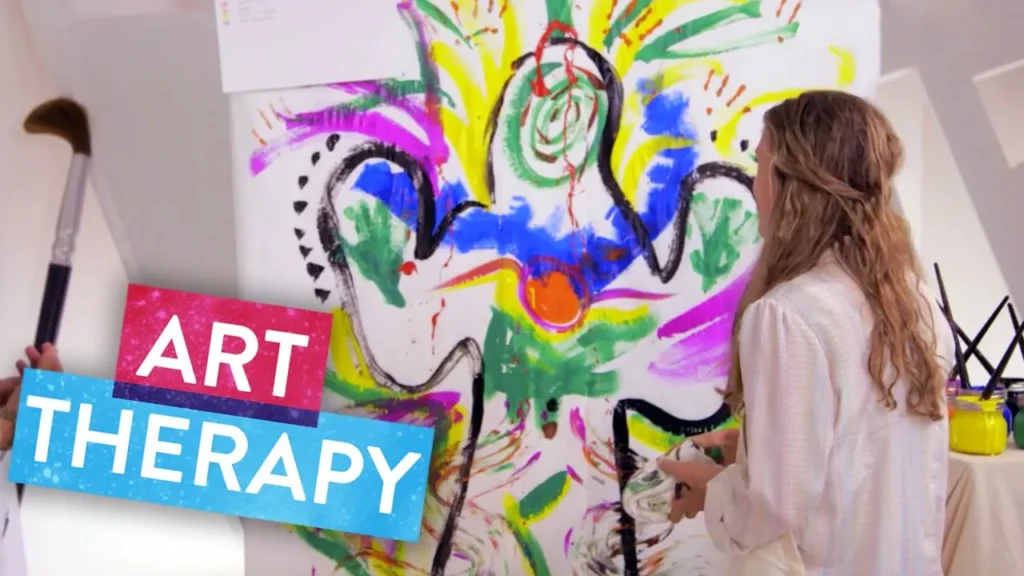Art therapy is an innovative and therapeutic approach that leverages the power of creative expression to promote mental, emotional, and psychological healing. University art therapy programs provide comprehensive training to equip future professionals with the knowledge and skills needed to use art as a therapeutic tool. These programs blend the study of psychology, counseling, and art, preparing students for a rewarding career in mental health and wellness.

What is Art Therapy?
Art therapy is a form of psychotherapy that uses various forms of artistic expression—such as drawing, painting, and sculpture—as a means for individuals to communicate emotions, process trauma, and develop self-awareness. This modality is particularly effective for people who may have difficulty expressing their thoughts and feelings verbally. Through the process of creating art, individuals can explore and confront emotions in a non-verbal, yet profoundly impactful way.
Core Elements of University Art Therapy Programs
University art therapy programs typically include a combination of theoretical study, practical skill development, and hands-on experience. The following are key components found in most programs:
- Psychology and Counseling Theories: A solid understanding of psychological principles is essential for art therapists. Students begin their studies with courses in human development, mental health, and counseling techniques to develop a foundation for therapeutic practice.
- Artistic Media and Techniques: Aspiring art therapists are trained in a wide variety of artistic techniques and media, from traditional forms like painting and drawing to more contemporary methods like digital art. This allows therapists to guide clients in using different materials for self-expression.
- Clinical Training: Direct, supervised experience working with clients is a vital part of the training. Most programs include clinical internships where students practice art therapy techniques under the supervision of licensed professionals. This allows students to apply theoretical knowledge in real-world therapeutic settings.
- Ethics and Research: Art therapy programs often emphasize ethical standards in therapeutic practice, along with courses in research methods. Understanding the ethics of patient care and having the ability to evaluate the effectiveness of therapeutic interventions are critical skills for future practitioners.
- Cultural Awareness and Diversity: Many programs focus on cultural competency, helping students learn how to work with individuals from diverse backgrounds. This is essential for practicing therapists who will encounter a wide range of clients with different life experiences and cultural perspectives.
Graduate-Level Training: Master’s and Doctoral Programs
To practice as a licensed art therapist, a master’s degree is typically required. Master’s programs in art therapy generally last two to three years and involve a combination of coursework and clinical training. Many programs are designed to meet state licensure requirements, making graduates eligible for certification as Registered Art Therapists (ATR) or other relevant credentials.
For those interested in advancing their careers or contributing to research in the field, doctoral programs are also available. These programs focus on advanced clinical practice, research, and leadership in art therapy, allowing professionals to further specialize.
Career Paths in Art Therapy
Graduates of art therapy programs find opportunities in a wide range of settings:
- Hospitals and Healthcare Facilities: Art therapists in medical settings support patients dealing with chronic illness, trauma, or emotional distress.
- Schools: In educational environments, art therapy is used to support children and adolescents, especially those with emotional, behavioral, or learning challenges.
- Private Practice: Some therapists choose to work independently, offering art therapy sessions to individuals, families, or groups in a private practice setting.
- Community Organizations: Non-profits and social services organizations frequently employ art therapists to work with specific populations, such as veterans, refugees, or individuals recovering from substance abuse.
Accreditation and Licensure
Accreditation is a critical factor when choosing a university art therapy program. In the U.S., accreditation bodies like the Commission on Accreditation of Allied Health Education Programs (CAAHEP) and the Accreditation Council for Art Therapy Education (ACATE) ensure that programs meet professional standards. Graduating from an accredited program is often a prerequisite for licensure, which varies by state and country but is essential for practicing legally as an art therapist.
Top Art Therapy Programs
Some universities stand out for their exceptional art therapy programs:
- New York University (NYU) – Offers a leading Master of Arts in Art Therapy program with a strong focus on clinical practice.
- Drexel University – Known for integrating art therapy and counseling in its curriculum, providing a well-rounded education in therapeutic methods.
- School of the Art Institute of Chicago (SAIC) – Offers a comprehensive MA in Art Therapy and Counseling with a focus on artistic innovation.
- Lesley University – A pioneer in expressive arts therapy, Lesley offers a unique interdisciplinary approach.
- George Washington University – Features a dual-degree option combining Art Therapy and Counseling, emphasizing both therapeutic and clinical skills.
Conclusion
University art therapy programs offer a robust combination of psychological education, artistic training, and hands-on clinical experience, all designed to prepare students for a career in this growing field. As mental health awareness increases globally, the demand for art therapists continues to rise, offering meaningful career opportunities in a variety of settings. By completing an accredited program, graduates are equipped to help individuals unlock the healing potential of creativity, making a significant impact on both individual lives and the broader field of mental health.